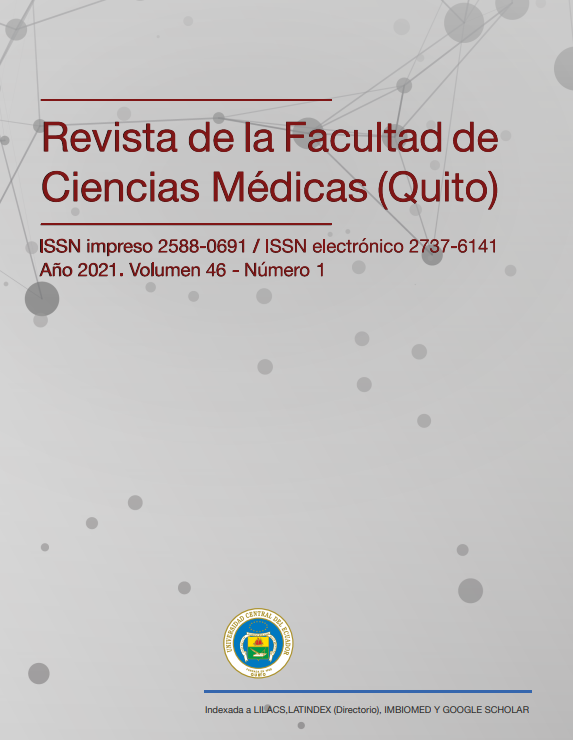Iris Cysts. About a case.
DOI:
https://doi.org/10.29166/rfcmq.v46i1.3056Keywords:
Cyst, iris, secondary cyst, ultrabiomicroscopy, drainage, traumaAbstract
Introduction: Iris cysts are benign encapsulated lesions of liquid content that can be in the pigment epithelium of the iris or in its stroma, they are classified according to their etiology as primary when they do not have a known cause and secondary when they form consequently from trauma, drugs, malignant tumors, uveitis, parasites or systemic disorders.
Symptoms include visual axis obstruction, blurred vision, and even corneal decompensation. The diagnosis is made by direct observation through the slit lamp and with imaging studies such as ultrasonography. Once the diagnosis is established, its treatment remains controversial and include iridectomy, drainage of cystic contents, use of argon laser and YAG laser.
Case presentation: A 28-year-old female patient with a history of right ocular trauma, subsequently presenting a cystic lesion in the iris, assessed by biomicroscopy and imaging studies (ultrabiomicroscopy) confirming the diagnosis of iris cyst, for which surgical drainage was performed with a favorable evolution.
Conclusion: Iris cysts are rare lesions that could compromise the visual field depending on their location and size, which is why surgical drainage of the iris cyst content is an effective therapeutic option.
Downloads
Metrics
References
Albert DL, Brownstein S, Kattleman BS. Mucogenic glaucoma caused by an epithelial cyst of the iris stroma. Am J Ophthalmol. 1992;114(2):222–4.
Georgalas I, Petrou P, Papaconstantinou D, Brouzas D, Koutsandrea C, Kanakis M. Iris cysts: A comprehensive review on diagnosis and treatment. Surv Ophthalmol [Internet]. 2018;63(3):347–64. Available from: https://doi.org/10.1016/j.survophthal.2017.08.009
Razo Martínez O. Quiste estromal de iris: a propósito de un caso. Arch la Soc Canar Oftalmol. 2008;(19):42–6.
Shields JA, Kline MW, Augsburger JJ. Primary iris cysts: A review of the literature and report of 62 cases. Br J Ophthalmol. 1984;68(3):152–66.
Gupta V, Rao A, Sinha A, Kumar N, Sihota R. Post-traumatic inclusion cysts of the iris: A longterm prospective case series. Acta Ophthalmol Scand. 2007;85(8):893–6.
Shields CL, Kancherla S, Patel J, Vijayvargiya P, Suriano MM, Kolbus E, et al. Clinical survey of 3680 iris tumors based on patient age at presentation. Ophthalmology. 2012;119(2):407–14.
Katsimpris JM, Petropoulos IK, Sunaric-Mégevand C. Ultrasound biomicroscopy evaluation of angle closure in a patient with multiple and bilateral iridociliary cysts. Klin Monbl Augenheilkd. 2007;224(4):324–7.
Gogos K, Tyradellis C, Spaulding AG, Kranias G. Iris cyst simulating melanoma. J AAPOS. 2004;8(5):502–3.
McWhae JA, Rinke M, Crichton ACS, Van Wyngaarden C. Multiple bilateral iridociliary cysts: Ultrasound biomicroscopy and clinical characteristics. Can J Ophthalmol. 2007;42(2):268–71.
Downloads
Published
How to Cite
Issue
Section
License
Copyright (c) 2021 Mercy Gómez

This work is licensed under a Creative Commons Attribution-NonCommercial-NoDerivatives 4.0 International License.











